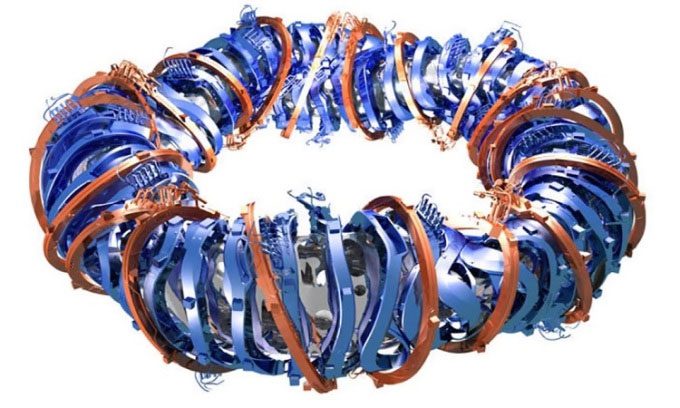The startup Proxima Fusion in Munich has raised nearly $7.5 million in its first funding round to make stellarator fusion power plants a reality.

Design of the Wendelstein 7-X stellarator reactor. (Image: IPP)
Proxima was founded by scientists and engineers who have previously worked at the Massachusetts Institute of Technology (MIT), Google X, and the Max Planck Institute for Plasma Physics (IPP). Some researchers have experience in developing the Wendelstein 7-X (W7-X), the world’s most advanced stellarator fusion reactor, as reported by Yahoo on May 31.
Most current fusion reactor designs can be categorized into two types: tokamak and stellarator. Both are magnetic confinement fusion devices, where hydrogen isotopes are heated to temperatures exceeding that of the sun. These excited particles become energy-rich plasma and rotate within a circular chamber. Strong magnetic coils surrounding the chamber confine the charged plasma, where atoms fuse and release tremendous energy.
The tokamak is a toroidal magnetic confinement device and the leading prototype for fusion reactors. The stellarator features a much more sophisticated design with a series of twisted magnets surrounding the plasma. Using complex electromagnets to confine superheated plasma, the stellarator presents greater technical challenges compared to the more widely used tokamak approach to fusion energy. However, if these challenges can be overcome, the stellarator offers multiple advantages, such as stable operation and manageable excess heat. According to Proxima Fusion, research conducted by the IPP since the W7-X became operational in 2015 has the potential to bridge the gap between tokamaks and stellarators, paving the way for commercialization.
“The experimental progress from W7-X and recent achievements in stellarator modeling have changed the landscape. Now, stellarators can address key issues of tokamaks and scale up, contributing to improved plasma stability and achieving high performance in steady state,” stated Francesco Sciortino, co-founder and CEO of Proxima.
Proxima aims to deploy a new high-performance stellarator within the next few years and launch its first nuclear power plant in the 2030s.




















































